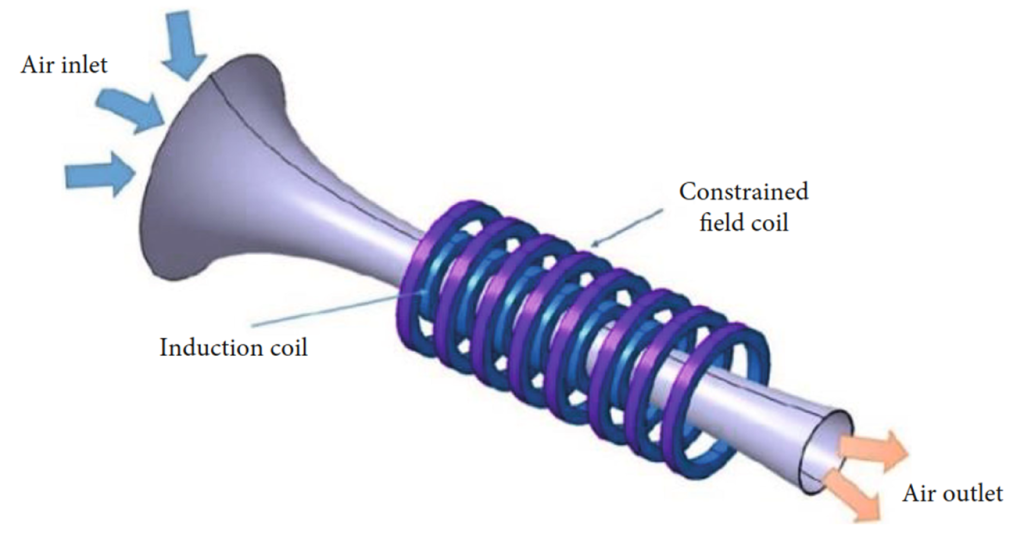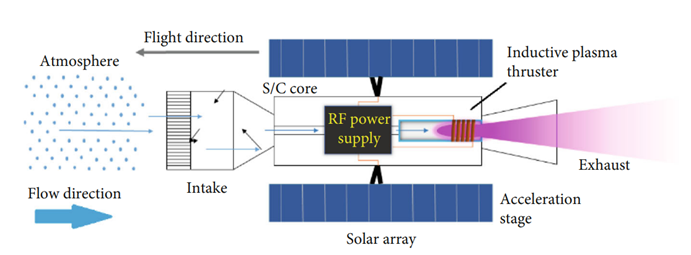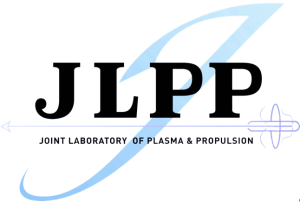Our research
ABEP
As a branch of electric propulsion technology, the concept of Atmosphere-breathing Electrical Propulsion (ABEP) was first proposed by Demetriades in the United States in 1956 and was designed to extend the life of vehicles in low earth orbit (LEO) and very-low earth orbit (VLEO). With the increased number of atmospheric particles in LEO compared to high orbit, orbiting satellites are necessarily subject to aerodynamic drag from atmospheric molecules, requiring additional power for drag compensation. The ABEP system collects the rarefied atmosphere present in LEO as propellant, and the electric thrusters generate a certain amount of thrust to offset the drag and maintain the vehicle operation without carrying additional fuel.

ABEP concept diagram
The aspirated electric propulsion (ABEP) system is mainly composed of two parts: the air inlet and the electric thruster. The air inlet compresses and pressurizes the atmospheric particles while collecting them to provide the air source pressure required by the electric thruster loaded on the ABEP. The thruster ionizes the collected atmospheric particles, heats them up and ejects them, generating a certain amount of thrust to counteract the drag of the thin atmosphere. Ideally, the system can generate continuous thrust without carrying any propellant.

ABEP principle diagram
With relatively high atmospheric drag in the very-low earth orbit region, satellite operations require more fuel for drag compensation. Since the conventional electric propulsion system can sustain a shorter operation time due to the need to carry enough propellant, LEO resources have not been fully utilized. However, VLEO with shorter observation distances due to closer proximity to the surface, also allows satellites to obtain benefits such as higher resolution observations, low power transmission, and lower launch costs. ABEP systems provide theoretically almost unlimited propellant and have the advantage of high specific impulse of electric propulsion, which is very suitable for VLEO operation, and the system is also theoretically suitable for any planet with atmosphere.
At this stage, the research of ABEP is mainly focused on simulation and experimental validation stage. For example, the National University of Defense Technology has carried out a series of designs and simulations of air intakes in recent years; SITAEL developed a propulsion device using a two-stage Hall-effect thruster (RAM-HET), but the system is still unable to provide positive thrust.

The ignition figure of ablative pulsed plasma thruster (APPT)
In our lab, we have performed a series of numerical simulations of the inlet device, and also found the existence of a shock-like structure in the flow field of the front section of the inlet device, the presence of thermodynamic nonequilibrium in the flow field, etc. We also analyzed the effect of the molecule-wall collision model on the collection effect. Next, we will analyze it experimentally.
Featured articles:
[1] Siyu Lu, Zun Zhang, Hongwu Deng, et.al. Characteristic Simulation of gas collecting device for air breathing electric propulsion[J]. VACUUM ELECTRONICS, 2021(4):26-33.
(Lastly Updated in September, 2022)
